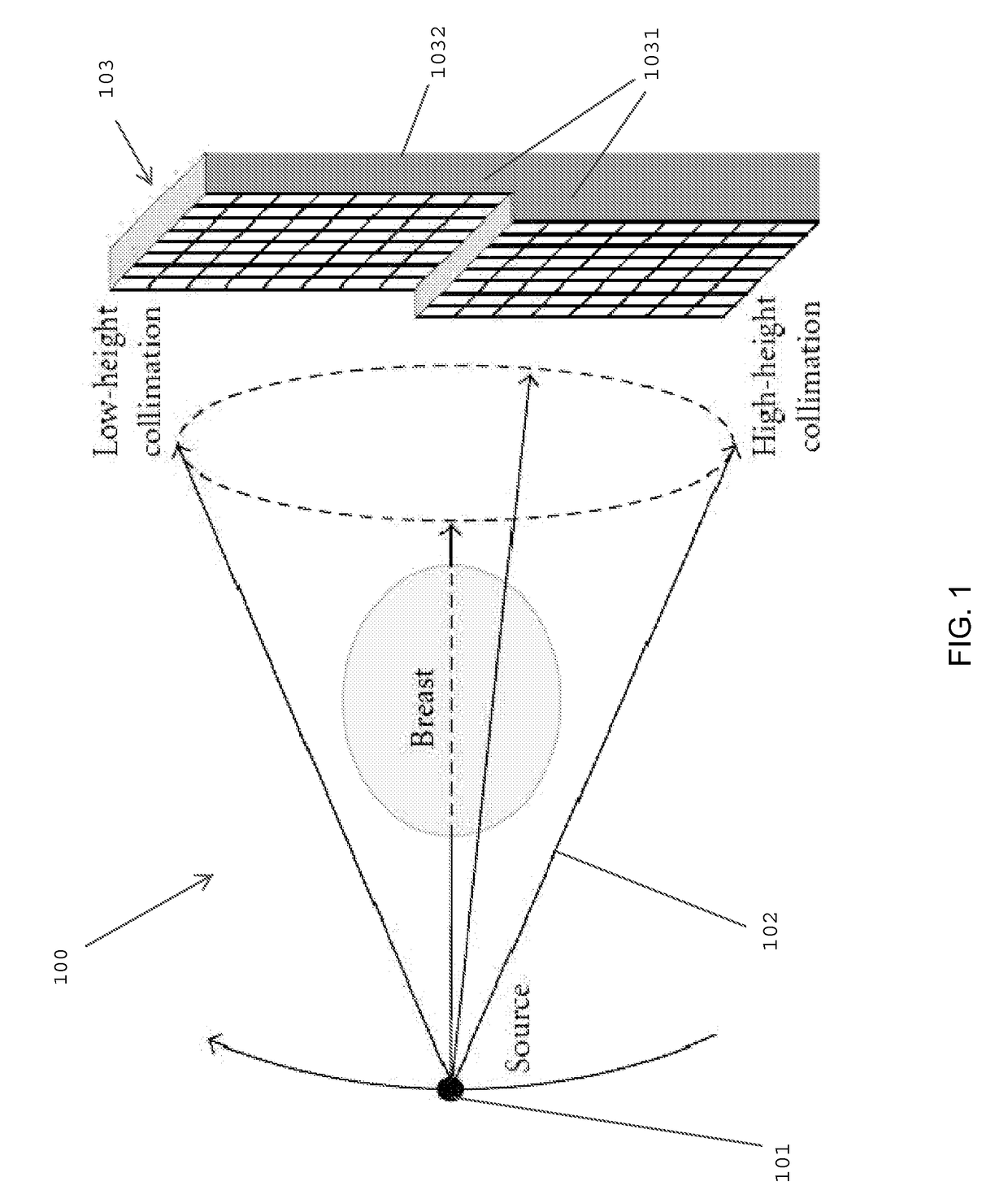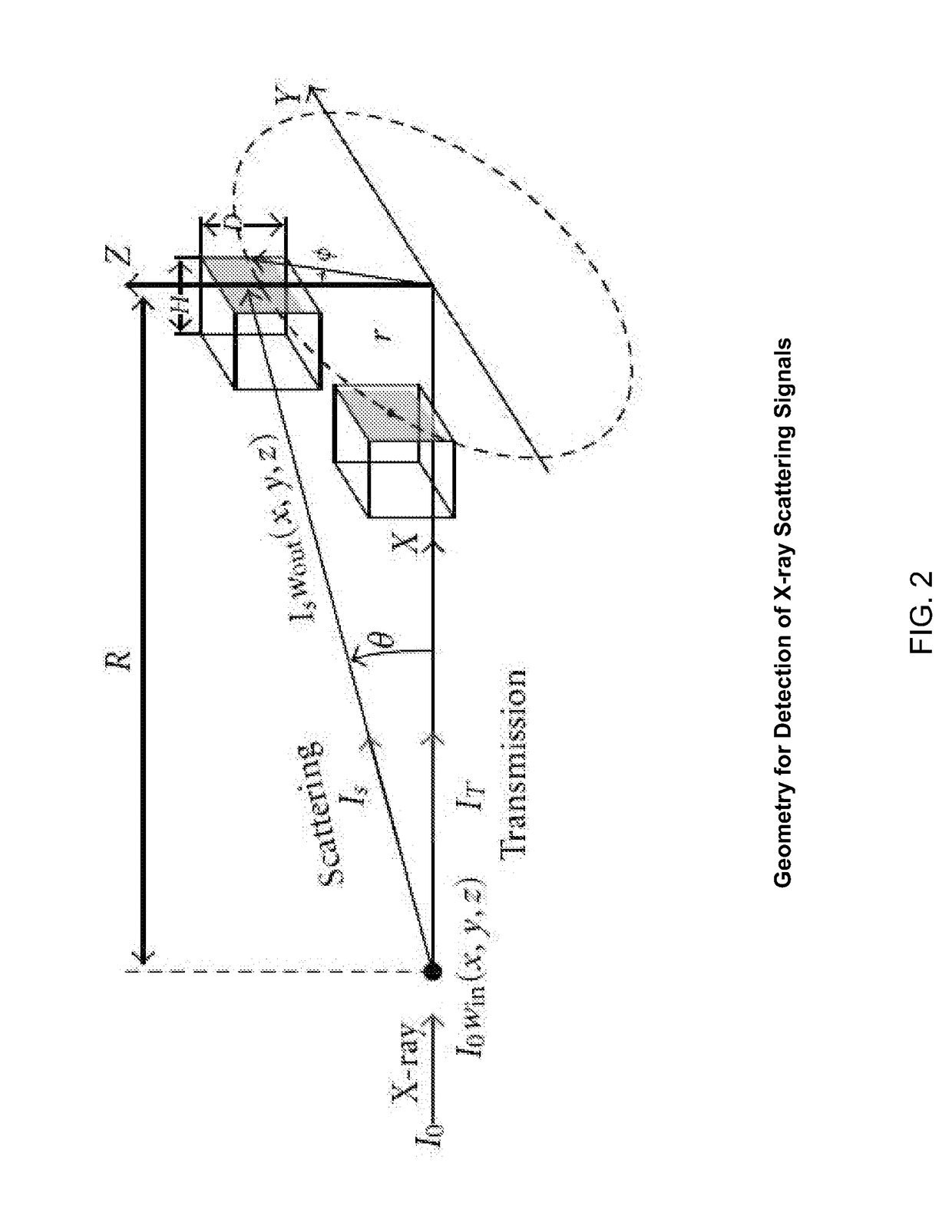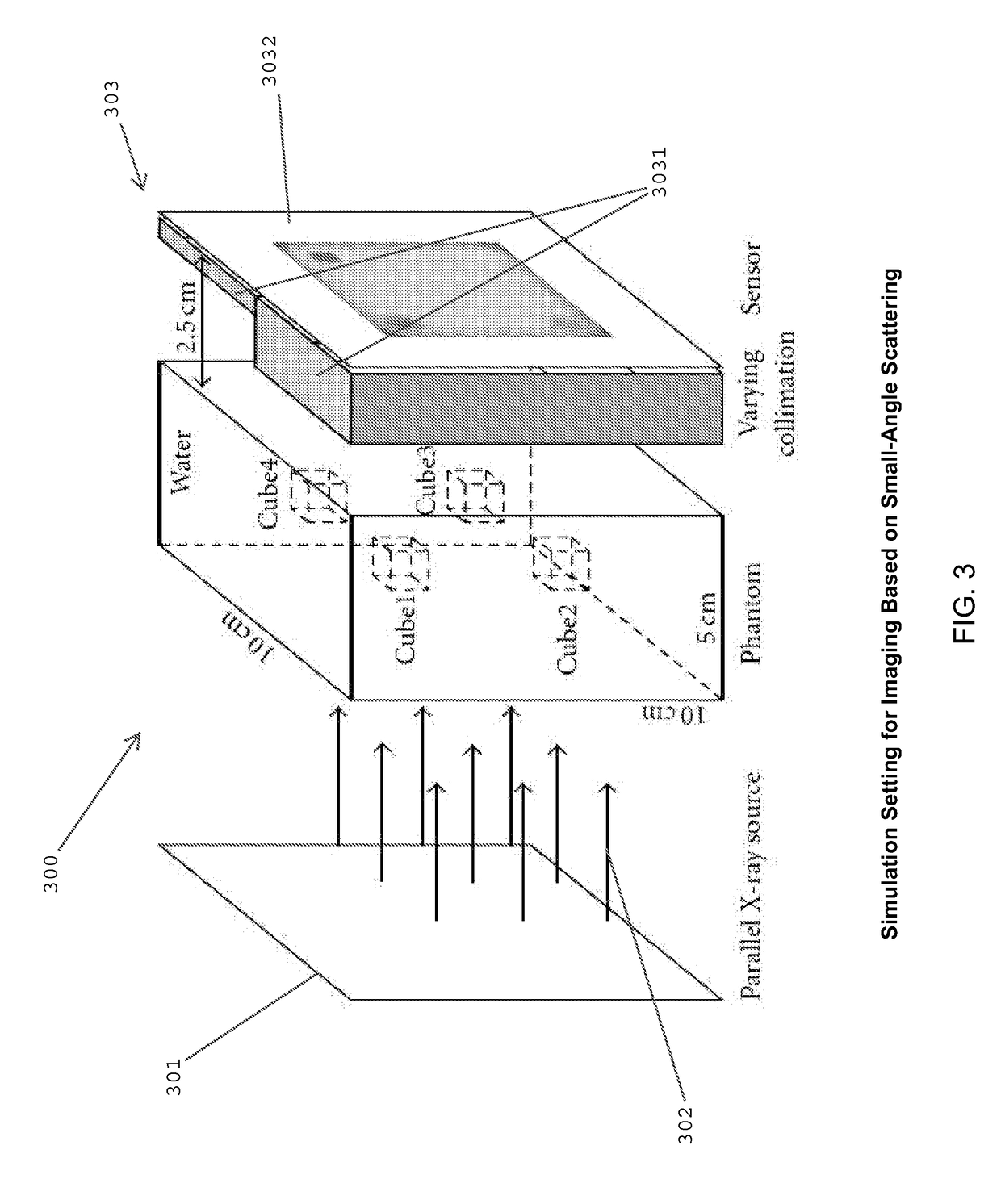Multi-parameter X-ray computed tomography
a computed tomography and multi-parameter technology, applied in the field of x-ray imaging, can solve the problems of poor image contrast, high spatial resolution images, and inability to allow high contrast and low dose imaging in patients or animal models, and achieve the effects of enhancing dark-field image resolution, reducing cross-talk, and increasing angular sampling ra
- Summary
- Abstract
- Description
- Claims
- Application Information
AI Technical Summary
Benefits of technology
Problems solved by technology
Method used
Image
Examples
Embodiment Construction
[0050]Reference will now be made in detail to various exemplary embodiments of the invention. The following detailed description is presented for the purpose of describing certain embodiments in detail and is, thus, not to be considered as limiting the invention to the embodiments described.
[0051]Included in embodiments of the invention are methods for extracting x-ray small-angle scattering data and using this segregated data to produce a high quality, high contrast x-ray image. A technique for extracting the x-ray small-angle scattering data involves collecting the x-ray projection data multiple times with varying collimation before an x-ray detector array. In preferred embodiments, each x-ray sum is acquired at least twice using different collimation aspect ratios. The projection data acquired with a collimator of a sufficiently large aspect ratio (otherwise referred to as a high collimation aspect ratio) contain mainly the primary beam with little scattering. In contrast, the co...
PUM
 Login to View More
Login to View More Abstract
Description
Claims
Application Information
 Login to View More
Login to View More - R&D
- Intellectual Property
- Life Sciences
- Materials
- Tech Scout
- Unparalleled Data Quality
- Higher Quality Content
- 60% Fewer Hallucinations
Browse by: Latest US Patents, China's latest patents, Technical Efficacy Thesaurus, Application Domain, Technology Topic, Popular Technical Reports.
© 2025 PatSnap. All rights reserved.Legal|Privacy policy|Modern Slavery Act Transparency Statement|Sitemap|About US| Contact US: help@patsnap.com



